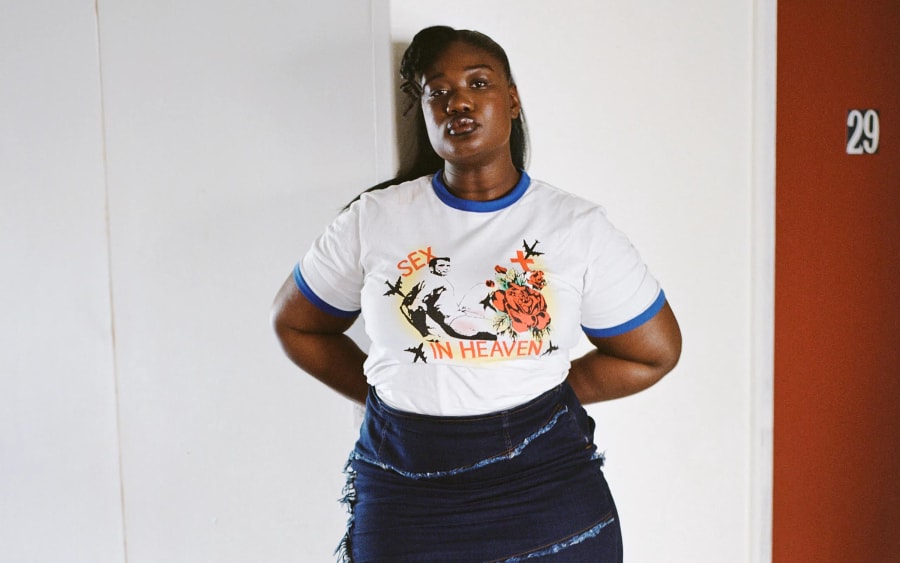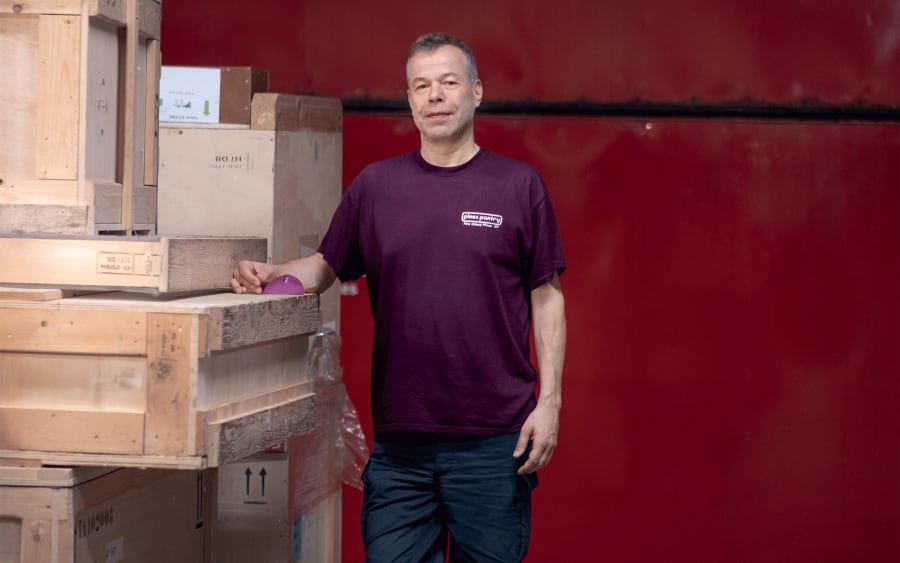You never escape Anna Maria Maiolino’s body in her work: It is physically present in much of the Brazilian artist’s five decades of performance and video of course, but it is also a key inspiration for the tactile sculpture and abstract drawing she turned to later, with each work bearing trace of its own production.
Fernanda Brenner, the co-curator (with Sébastien Delot) of ‘Je suis là/Estou Aqui’, the octogenarian artist’s forthcoming exhibition at Musée Picasso in Paris, says she hopes the show will ‘present Maiolino’s work as an active declaration of presence rather than a historical retrospective.’ Hence the title ‘I Am Here’.
Maiolino was born in southern Italy, but her family emigrated to Venezuela in 1954, and on to Rio de Janeiro four years later. She graduated from the city’s Escola Nacional de Belas Artes in 1963 alongside the likes of Antonio Dias and Rubens Gerchman, her future husband, just as the US-backed coup erupted in Brazil and led to the instalment of a military dictatorship.
Maiolino, who no longer gives interviews, recalled in 2012 to curator Helena Tatay, ‘I found myself being an immigrant again, without speaking Portuguese. I felt as though I was on shifting sands, permanently anxious; what kept me going was my obstinate search for a language, my obsession to become an artist.’ The artist soon found peers whose thinking was as radical as hers; in 1967, she signed the ‘Declaration of Basic Principles of the Avant-Garde’ alongside major Brazilian Postwar artists such as Hélio Oiticica, Lygia Pape, and Lygia Clark – a manifesto calling for art to be ‘extended to all fields of man’s sensation and consciousness.’
Her early works are overtly political, expounding on the social reality of a government fueled by censorship and machismo: The Super 8 film In-Out Antropofagia (1973) features a series of grotesque close-cropped shots of male and female mouths taped up, stuffed with an uncooked egg or regurgitating string. Even today these video performances have the power to make you wince: X (1974) for example, from the series ‘Fotopoemação’ (Photo poem action, 1973–2017) is a tightly framed shot of the artist pressing a pair of lethally sharp scissors against her tongue and eyes. Por um fio (By a Thread, 1976), one of her most iconic works, in which the artist is photographed sitting in between her mother and daughter, a length of string linking each of them via their mouths, conjures histories of inherited gendered violence and female solidarity.
In 2009, Maiolino wrote a set of notes looking back on her past work: ‘I made use of my own body at that particular moment, not as a mere metaphor but as a truth, something that belonged to the domain of the real.’ In Entrevidas (Between Lives, 1981), for example, hundreds of chicken eggs are spread across the ground in close proximity, the public forced to tiptoe through them; the egg a symbol of life, is under constant threat of being violently smashed. Brenner says this foregrounding of the fragility of existence was a reaction to the time. ‘She became instrumental in the country’s artistic resistance during the military dictatorship. Her performance Entrevidas is now considered an iconic work of Brazilian political art from this era. Maiolino’s practice has helped redefine Brazilian art beyond nationalist constraints.' The artist recently restaged the work outside the Museu de Arte São Paulo to mark the extension of the institution; this time the artist herself walked through the eggs in a nod to the violence that continues to plague Brazil.
Yet Maiolino has never just been a performance artist. Early on, she started making papercut books that required the activation of the viewer. In later years, she explored sculpture, with works such as São 8 (They Are Eight, 1998), a pile of one meter moulded cement batons, and the ‘Cobrinhas’ (Little Snakes) series, in which a continuous line of moulded plaster was layered into piles.
Maiolino's international prominence has grown exponentially since being awarded the Golden Lion for Lifetime Achievement at the Venice Biennale in 2024. There, she packed an old storehouse at the back of the Arsenale with coiled clay sausages, hand-rolled irregular lumps, curls, coils, and donuts – a sculpture from the series ‘Terra Modelada’ (Modeled Earth, 1993–2024). ‘Her work is unique in Brazilian art history,’ says Marco Antonio Nakata, the director of Instituto Guimarães Rosa, the government agency which promotes Brazilian art abroad. ‘It is so multifarious – maybe only Cildo Meireles is this versatile. And even in Maiolino’s strongly political works, she is careful with the aesthetics. It is never only the message.’
Maiolino’s interest in lines, be they drawn or sculpted, stems from the proposition offered in Entrevidas: how one gets from A to B. It is an equation conjured by her own migration and initial status as a foreigner in Brazil. Her work has always been about where the personal and the political meet, how the body, particularly the alienated female body, interacts with the world around it and pressures borne onto it. ‘Maiolino’s art reflects a constant negotiation between displacement and belonging. It’s shaped by her migration from Postwar Italy to politically unstable South America,’ Brenner says. ‘This journey created an enduring fascination with identity and borders – not just physical territories, but the spaces between here and there.’
Anna Maria Maiolino
‘Je suis là/Estou Aqui’
Musée Picasso, Paris
Until September 21, 2025
Anna Maria Maiolino is represented by Galleria Raffaella Cortese (Milan, Albisola), Hauser & Wirth (Zurich, Basel, Hong Kong, London, Los Angeles, New York, Paris, Somerset, St. Moritz), and Luisa Strina (São Paulo).
Oliver Basciano is a Minas Gerais-based journalist, critic, and author of Outcast: A History of Leprosy, Humanity and the Modern World (2025).
Caption for header image: Anna Maria Maiolino, _X_ II, ‘Photopoemaction’ series, 1974. Photograph by Max Nauenberg. Courtesy of the artist and Galleria Raffaella Cortese.
Published on June 27, 2025.


